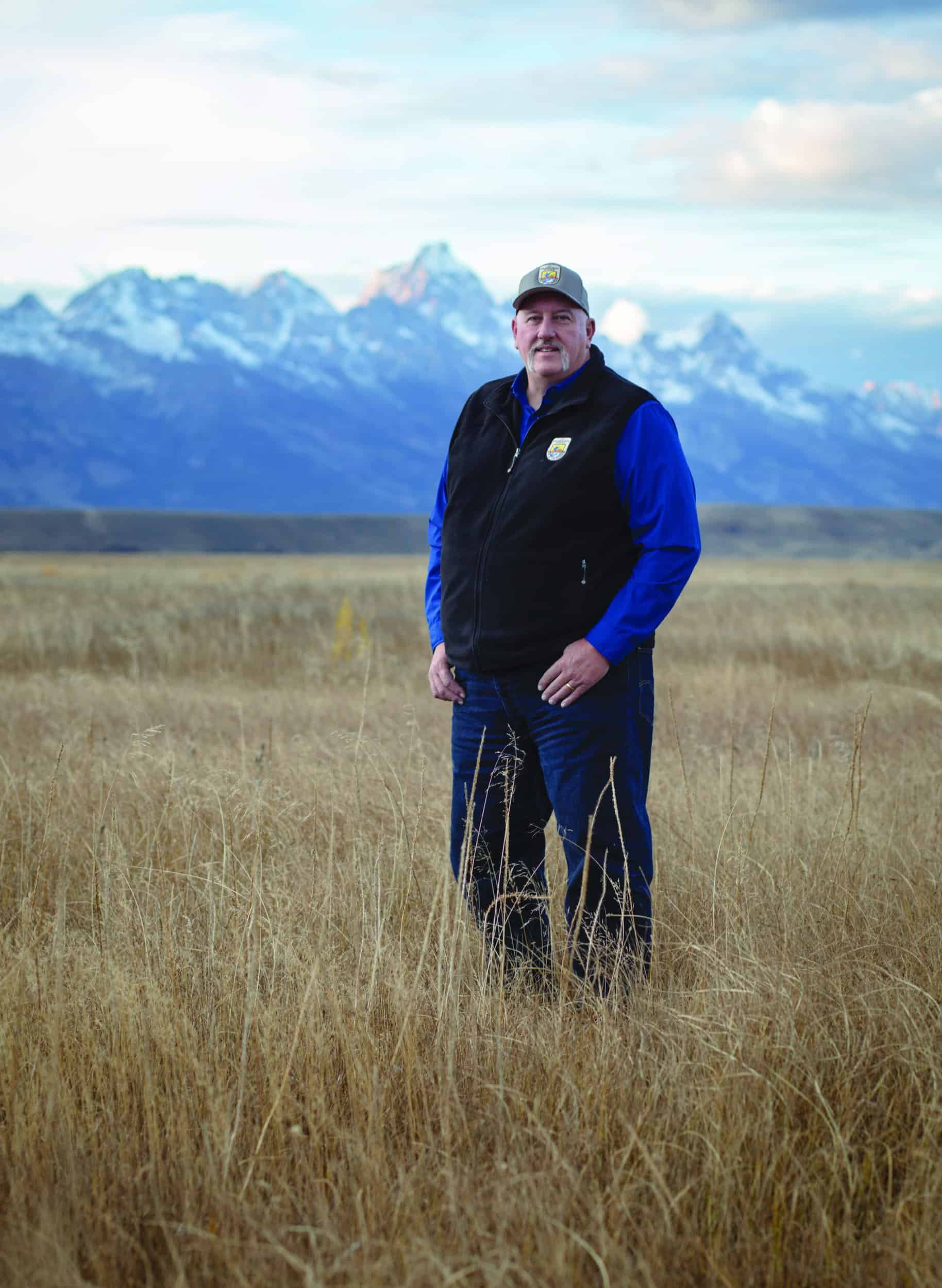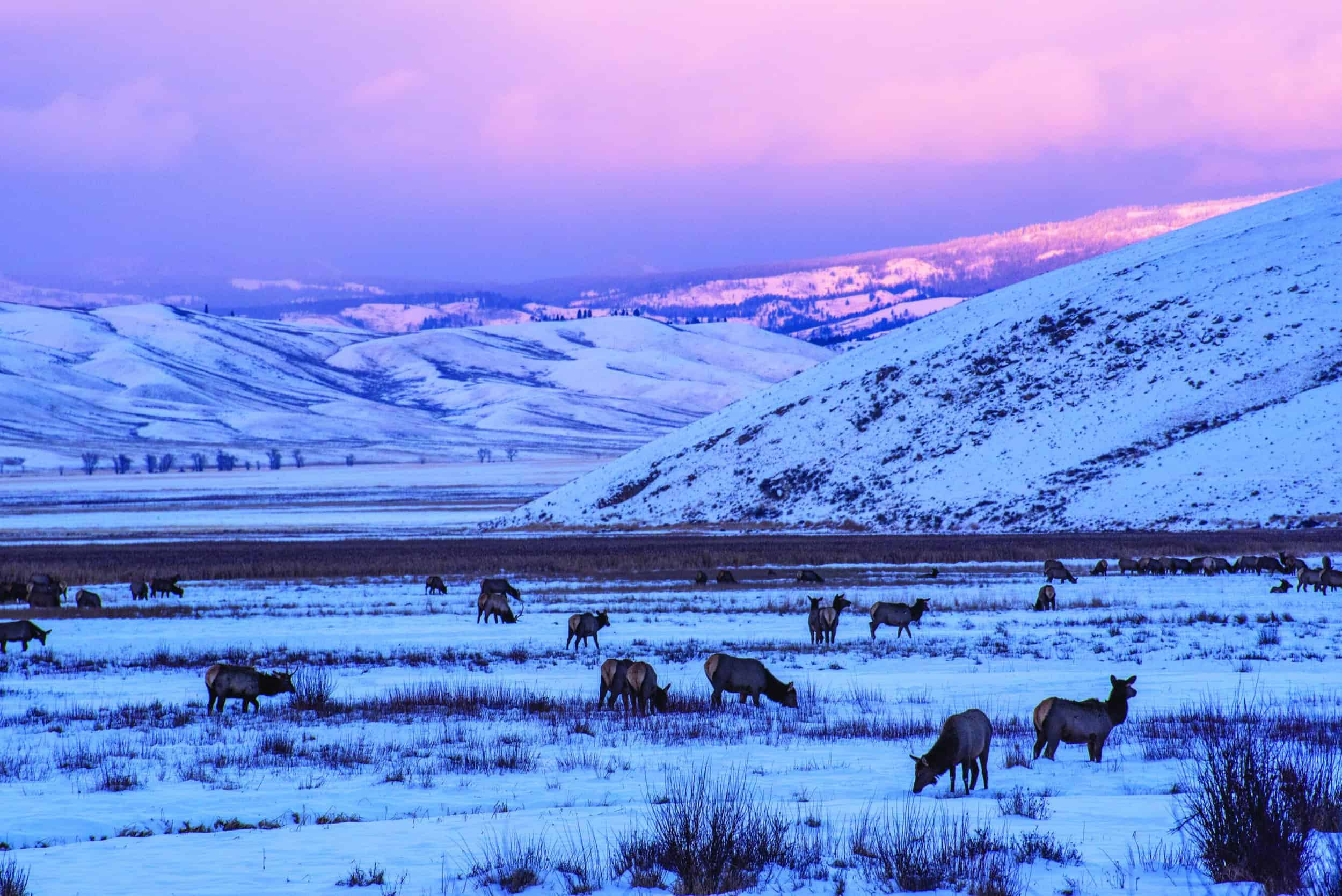Read The
Current Issue
Frank Durbian
The new(ish) manager of the National Elk Refuge appreciates working in one of the world’s most intact ecosystems and marvels at all of the species that call the 24,700-acre refuge home. There are more than 230 of them!
// By Lila Edythe

When he started as the manager of the National Elk Refuge in July 2020, Frank Durbian was new to Jackson Hole and the Greater Yellowstone Ecosystem (GYE) and was thrilled to be here. A lifelong Midwesterner—he’s a native of Kansas and most recently spent nine years working at wildlife refuges in North Dakota—Durbian says, “I was drawn to this job for personal and professional reasons.” The personal reasons include that he and his wife, June, are avid outdoors people. They camp, ice fish, fly-fish, hunt, and hike. “We knew we could do all of these things here and do them on a scale not necessarily possible in the Midwest,” he says. Last year, Durbian fly-fished into December. “I’m pretty cold tolerant,” he says.
Professionally, Durbian, who is in his mid-fifties and has been with the National Wildlife Refuge System since 1995, was drawn to the elk refuge manager position because it was different from any of his prior posts. “In my career with the refuge system, I’ve traveled around the Midwest quite a bit and served as a wildlife biologist and manager on numerous refuges there,” he says. “After nine years in North Dakota, I was interested in seeking an opportunity to work with new challenges in a new ecosystem.” But Durbian didn’t want to work in just any new ecosystem.
“Working and living in a relatively intact ecosystem in our country is fantastic. And being able to actually see the large, charismatic megafauna like gray wolves, grizzly bears, and thousands of elk never ceases to amaze me.”
FRANK DURBIN
The 15-million-acre GYE, which the National Elk Refuge sits at the southern end of, is one of the most intact ecosystems remaining in the world. All of the large mammals that lived in the area prior to the arrival of Europeans still live here. “Working and living in a relatively intact ecosystem in our country is fantastic,” Durbian says. “And being able to actually see the large, charismatic megafauna like gray wolves, grizzly bears, and thousands of elk never ceases to amaze me and makes me realize how fortunate I am to be here, and how fortunate we all are that this ecosystem still exists.”
While Durbian is long past his days of doing fieldwork as a wildlife biologist—his first positions with the National Wildlife Refuge System were as a seasonal biological science technician and as a wildlife biologist (studying wetlands and water birds and reptiles)—he makes sure to get out and experience and explore the National Elk Refuge. “I think it is important if you’re responsible for managing a refuge, that you experience as many things as possible,” he says.
Durbian’s experiences on the National Elk Refuge even include the popular horse-drawn sleigh rides into the herd offered between December and early April. “It’s an excellent way to enjoy the refuge and see one of its principle species,” he says. To see some of the other species that the refuge protects, Durbian recommends driving the Elk Refuge Road to Miller Butte (to see bighorn sheep) and visiting Bert’s Bench, a wetland area near the refuge’s southwest edge (trumpeter swans and other waterfowl). “There are more than elk on the refuge, and that’s important to understand,” he says. “The refuge is integral to the conservation of many species.” JH





